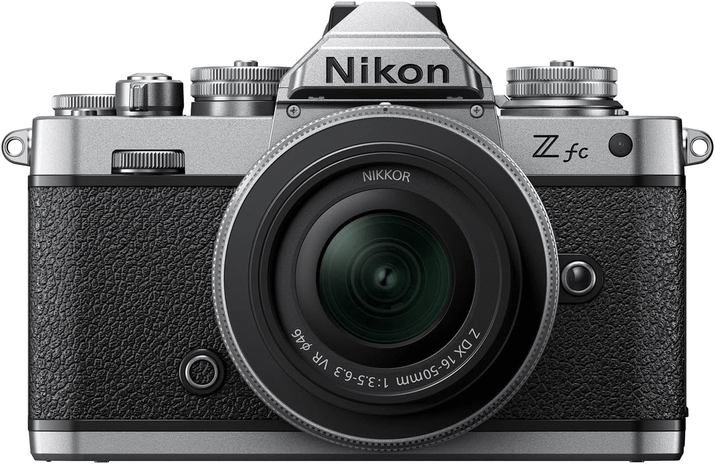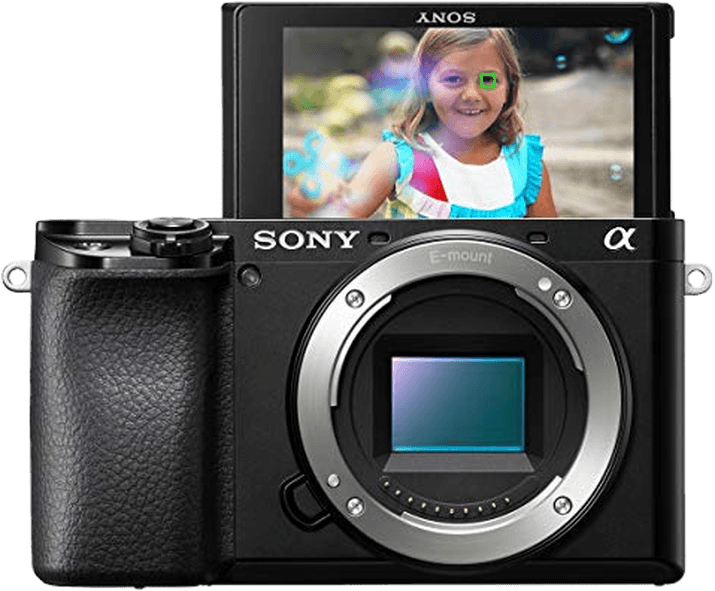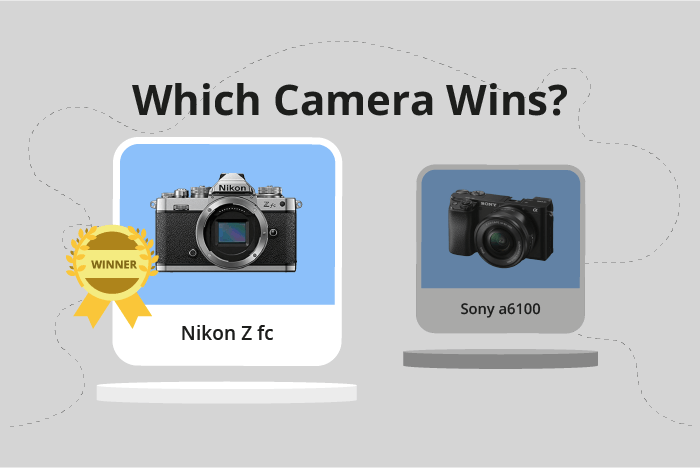Nikon Z fc vs Sony a6100 Comparison
Nikon Z fc

Sony a6100

The Nikon Z fc outperforms the Sony a6100 with a score of 72/100 compared to 66/100. Both mirrorless cameras share similarities, such as their compact design and lightweight build. The Nikon Z fc, released in 2021, is larger at 135 x 94 x 44mm and weighs 445g, while the Sony a6100, released in 2019, measures 120 x 67 x 59mm and weighs 396g.
The Nikon Z fc’s higher score reflects its superior performance and newer features, justifying its higher launch price of $959 compared to Sony a6100’s $750. However, the Sony a6100 still offers quality performance and a more affordable option for budget-conscious consumers.
Comparing these two cameras, the Nikon Z fc stands out as the better option due to its higher score and advanced features, while the Sony a6100 remains a viable alternative for those seeking a lower-priced option.
Nikon Z fc vs Sony a6100 Video Performance
The Nikon Z fc and the Sony a6100 both have a video score of 91/100, indicating that they have similar video capabilities. Both cameras share common features, including a maximum video resolution of 4K, maximum video dimensions of 3840 x 2160, a maximum video frame rate of 120fps, and built-in time-lapse functionality.
The Nikon Z fc excels in its video capabilities due to its ergonomic design and user-friendly interface. The camera’s compact size and lightweight body make it easier to handle and maneuver during video recording. Additionally, the Nikon Z fc has a fully articulating touchscreen, which offers more flexibility when composing shots and monitoring video recording.
The Sony a6100, on the other hand, has a few advantages in its video capabilities. The camera features a higher resolution electronic viewfinder, providing a clearer and more detailed view of the scene when recording video. Furthermore, the Sony a6100 has a faster autofocus system, which ensures that subjects remain sharp and in focus during video recording.
Both cameras perform exceptionally well in their video capabilities, with neither camera having a significant advantage over the other. The Nikon Z fc is better suited for those who prioritize ease of use and flexibility in composing shots, while the Sony a6100 is ideal for those who value a higher resolution viewfinder and faster autofocus. Ultimately, the choice between these two cameras depends on the individual user’s preferences and needs.
Nikon Z fc vs Sony a6100 Features and Benefits
The Nikon Z fc is the winner with a feature score of 83/100, while the Sony a6100 has a score of 68/100. Both cameras have several features in common, including a 3-inch screen size, touchscreen capabilities, flip screens, no GPS, WiFi, and Bluetooth connectivity.
The Nikon Z fc’s higher score is due to its superior screen resolution of 1,040,000 dots, compared to the Sony a6100’s 921,600 dots. This difference in resolution allows for clearer and more detailed image previews and improved menu navigation on the Nikon Z fc.
Although the Sony a6100 has a lower feature score, it still offers a solid set of features that are comparable to the Nikon Z fc. Both cameras provide users with the convenience of touchscreen functionality, flip screens for versatile shooting angles, and wireless connectivity options. The Sony a6100 is not necessarily better in any specific aspect, but it remains a capable camera for various photography needs.
To sum up, the Nikon Z fc has an advantage in screen resolution, contributing to its higher feature score. This improved resolution leads to a better user experience in terms of image preview and menu navigation. On the other hand, the Sony a6100 offers a similar set of features, making it a viable option for photographers as well. However, the Nikon Z fc stands out as the better camera in terms of features, providing users with a more refined experience.
Nikon Z fc vs Sony a6100 Storage and Battery
The Sony a6100 outperforms the Nikon Z fc in storage and battery, scoring 37/100 compared to the Nikon’s 29/100. Both cameras share similarities in storage, with one memory card slot each and compatibility with SD, SDHC, and SDXC cards. However, the Sony a6100 also accepts Memory Stick Pro Duo cards, giving it an advantage in storage versatility.
The Sony a6100’s battery life is significantly longer, providing 420 shots compared to the Nikon Z fc’s 260 shots. This difference makes the Sony a6100 more suitable for extended shooting sessions. Both cameras use different battery types, with the Sony a6100 utilizing the NP-FW50 battery and the Nikon Z fc using the EN-EL25 battery. Both cameras offer USB charging capabilities.
Despite the Nikon Z fc’s lower score in storage and battery, it still provides satisfactory performance for casual photography. However, the Sony a6100’s additional storage compatibility and longer battery life make it a better choice for those prioritizing these features.
Nikon Z fc vs Sony a6100 – Our Verdict
Are you still undecided about which camera is right for you? Have a look at these popular comparisons that feature the Nikon Z fc or the Sony a6100:

